05 Feb Reducing the Maternal Mortality of Black Mothers
What is Maternal Mortality?
In the United States, the month of February honors black history; the contributions and sacrifices African Americans have made for our country. It’s also a brief moment when we can shine a spotlight on the healthcare disparities amongst the melting pot of non-white racial groups that make up the American population. For black mothers in America, the situation is dire. A black mother is three times more likely to die from maternal related causes than white mothers.²
According to the World Health Organization (WHO), maternal mortality is the death of a woman who is pregnant or within 42 days of the termination of a pregnancy, from any cause related to or aggravated by the pregnancy or its management, but not from accidental or incidental causes.¹
Why is Maternal Mortality Significantly Higher for Black Women in the U.S?
The research shows that social determinants of health, such as education, economic stability, social and community support, and access to quality healthcare, play a strong role in healthcare outcomes.³ Another factor is implicit bias in the healthcare system, which is when a healthcare clinician automatically or unintentionally passes judgment on a patient, which affects his/her clinical decisions and behavior. Often, this bias is from cultural exposure and internalized over time, leading to less patient-centered care, poor provider communication and undertreatment of pain. While these are complex concepts, it’s important to understand that everyone can play a role in reducing maternal mortality of black women.
Two out of three maternal deaths are actually preventable,² if you know the warning signs.
What are Urgent Warning Signs During Pregnancy and the Postpartum Period?
First and foremost, talk to your provider if something doesn’t feel right or feels “off.” Also, know the urgent warning signs when medical care is needed right away:
- Severe headache
- Extreme swelling of the face, hands and feet
- Trouble breathing
- Heavy vaginal bleeding or discharge
- Overwhelming fatigue
Other tips to reduce risk of maternal mortality:
- Interview and find a provider who listens and addresses your concerns and has a reputation for providing respectful, high quality care
- Manage any chronic conditions closely with your provider, like high blood pressure, diabetes and anxiety/depression. Learn more about these conditions in Mommyato.
- Keep clear documentation of your medications and medical history that can be shared at each healthcare appointment. Keep documentation up to a year after the delivery of your baby.
- Maintain a healthy support system in your community; friends, family, colleagues and neighbors who can support, advocate and provide assistance as needed. Here is more information on forming a support team.
The significantly higher rate of black maternal mortality is not just a problem in the black community. It’s a problem for the American population as whole because this disparity reflects inequalities in healthcare practices, delivery and access across the United States. Everyone has a right to quality healthcare.
While there is a lot of work to do to improve the social determinants of health by public policy makers, healthcare consumers (mothers) can apply pressure to the system as well, by being well-informed of their medical needs and maintaining expectations for high quality, respectful care.
REFERENCES:
- American Medical Association (AMA). November 2021. What is structural racism? https://www.ama-assn.org/delivering-care/health-equity/what-structural-racism
- Centers for Disease Control (CDC). February 2022. Maternal mortality rates in the U.S., 2020. https://www.cdc.gov/nchs/data/hestat/maternal-mortality/2020/maternal-mortality-rates-2020.htm
- Centers for Disease Control (CDC). April 2022. Working together to reduce black maternal mortality. https://www.cdc.gov/healthequity/features/maternal-mortality/index.html
- Photo by Tubarones Photography: Grayscale Photo of Mother Kissing Her Baby. https://www.pexels.com/photo/grayscale-photo-of-mother-kissing-her-baby-3704379/



